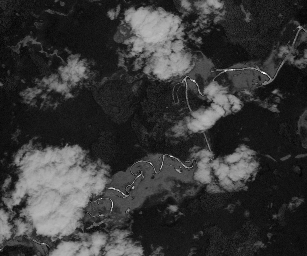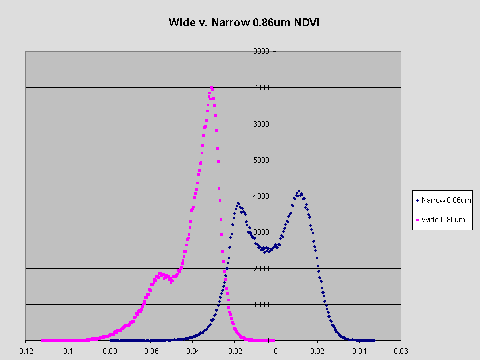
Image 1: Difference Image of the NDVI for the wide (0.81-0.91um) and narrow (0.84-0.88um) 0.86um band. Click for larger image. Top
The proposed 0.86um ABI Band has been narrowed from 0.81-0.91um to 0.84-0.88um. The narrowing of the 0.86um band is due to the atmospheric absorption features on both the low and high ends of the currently proposed wide 0.86um band. Image 1 below is the difference image of the NDVI (Normalized Difference Vegetation Index) of the wide 0.86um (0.81-0.91um) and the narrow 0.86um (0.84-0.88um). At first glance it may appear the difference between the two bands is large. Image 2 below is a histogram comparing the NDVI values of the two bands. The NDVI values were compared to those from a single wavelength estimate. By looking at the histogram scale it is clear the difference between the two bands is not large, in fact it is rather small. The narrow 0.86um band has much smaller magnitudes of differences, while the wide 0.86um band has magnitudes of differences up to double that of the narrow band, enough reason to narrow the 0.86um band. By narrowing the band to the narrow spectral window (0.84-0.88um), the atmospheric water vapor absorption features are avoided (see Image 3 below). Since atmospheric water vapor is highly variable on short time scales and the current wide 0.86um band contains areas sensitive to atmospheric water vapor, vegetation indices may appear to change. In reality there may be no change in vegetation, rather the apparent changes can be attributed to the satellite sensor detecting changes in atmospheric water vapor. By narrowing the 0.86um band to 0.84-0.88um the atmospheric absorption features are avoided and the vegetation indices will more accurately reflect the actual vegetation.

Image 1: Difference Image of the NDVI for the wide (0.81-0.91um)
and narrow (0.84-0.88um) 0.86um band. Click for larger image. Top

Image 2: Histogram, NDVI using narrow 0.86um (blue) and wide
0.86um (pink) Click for larger image. Top
Image 3: Spectral Profile showing current and narrowed 0.86um channel.
Top